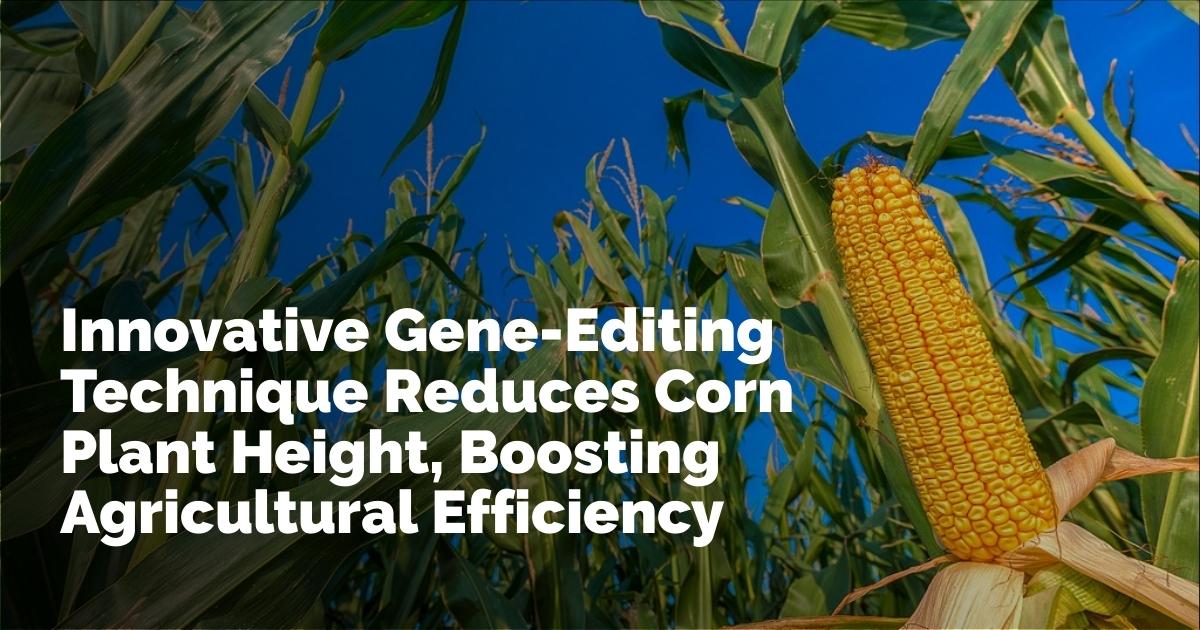Chinese Scientists Develop Groundbreaking Gene-Editing Technique to Shorten Corn Plants
Corn is a staple cereal crop, vital to global food security. Its tall stature, however, often poses challenges in planting density and lodging resistance. This is where cutting-edge research conducted by Chinese scientists comes into play. With the development of an innovative gene-editing method, it is now possible to reduce corn plant height, paving the way for high-density, sturdy varieties that resist lodging.
The Importance of Corn in Global Food Security
As the most-produced cereal crop worldwide, corn plays a crucial role in feeding populations across the globe. It is used not just for direct human consumption but also as a key ingredient in animal feed, biofuel, and various industrial products. Enhancing corn production has direct implications on food security and economic stability.
Increasing planting density is critical for improving crop yields. Traditionally, however, taller corn plants are more prone to lodging under high-density planting conditions. Lodge-resistant varieties are thus vital in maximizing yield efficiency yet continued development of such traits has been hampered due to limited genetic resources available for breeding.
A Collaboration of Leading Institutions
The breakthrough research was a joint effort by leading research institutions in China, namely the Biotechnology Research Institute of the Chinese Academy of Agricultural Sciences (CAAS), Anhui Agricultural University, and South China Agricultural University. Their combined expertise facilitated the targeted gene-editing study that could revolutionize corn agriculture globally.
Gene Editing: The Br2 Gene Focus
Central to the research was the modification of the Br2 gene, which is known to influence plant height. By employing precise gene-editing techniques, the scientists were able to create a knockout vector for the Br2 gene. Through meticulous experimentation, they identified seven transgenic lines with distinct mutations. These lines were tested across various corn inbred varieties.
Experimentation and Results: Achieving Dwarf Varieties
Hybridization experiments played a key role in validating the research. By crossing the genetically modified lines with elite inbred lines, the researchers observed consistent results; all 28 hybrid offspring exhibited the desired dwarf characteristics. Such outcomes highlight the robustness of the gene-editing approach in ensuring dwarfism regardless of the genetic background of the parent lines.
Accelerating Breeding Processes with Innovative Techniques
In addition to creating dwarf corn plants, the research team also developed a novel haploid inducer-mediated genome editing system. This system is groundbreaking as it accelerates the conversion of haploid plants into stable double-haploid lines—a process that can traditionally take several generations—achieving results within just two generations. This rapid development can drastically shorten the breeding cycle for new corn varieties.
Three distinct elite inbred lines that were put through this system showed significant height reduction, confirming the method's efficacy. This rapid and precise modification capability showcases the potential to swiftly introduce beneficial traits across diverse genetic backgrounds.
Implications and Future Prospects
The gene-editing method developed by the Chinese team holds significant potential for agricultural advancements. Short, high-density corn varieties can lead to optimized use of land, improved yield, and greater food security. Moreover, enhanced lodging resistance means crops are more resilient to environmental stresses such as strong winds and heavy rainfalls, reducing crop loss.
Wang Baobao, the corresponding author of the study, emphasized the transformative nature of this technique. With its precision and effectiveness, it offers critical technical support for breeding corn varieties suited for dense planting, hallmarking a significant stride toward sustainable agricultural practices.
Conclusion
This scientific breakthrough signifies a major leap forward in agricultural biotechnology. With its implications for improved yields and better food security, the gene-editing technique developed by Chinese scientists is poised to set a precedent for crop improvement methodologies worldwide. As research progresses, it could extend beyond corn, offering adaptability for other crucial crops—thereby reshaping the future of global agriculture.
출처 : Original Source

